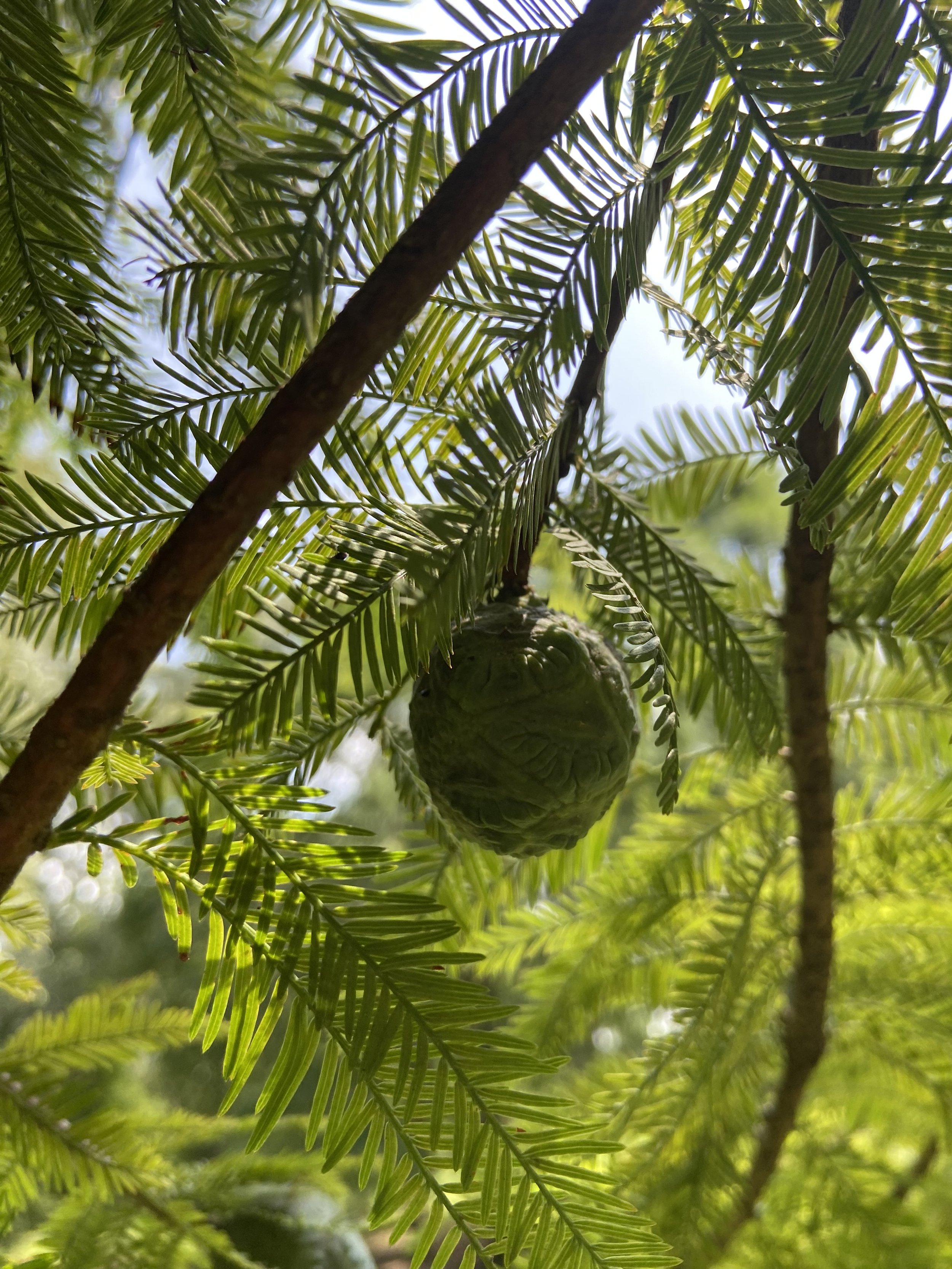
Woods Keeper at
Grant Park

Grant Park Summer Update, 9.1.23
It’s been a hot summer but oftentimes we get the benefit of working in the shade. We are grateful for Atlanta’s trees in many ways. Recently we’ve worked to clear thick brush along the slope between the Pool and Park Ave. That work continues. We’re also continuing to monitor and manage the wetland area off Cherokee Ave, focusing on two invasive targets: chaff flower (Achyranthes japonica) and stiltgrass (Microstegium vimineum). Slowing the spread and suppression of these plants is the name of the game on the way towards our goal of preserving native biodiversity and beautifying these spaces, working at the direction of Grant Park Conservancy. We were very happy to work with some volunteers on one occasion and look forward to working with more in future!
Additionally, several invasive Tree-of-heaven (Ailanthus altissima) trees were identified and marked for later treatment and an ongoing chaff flower experiment is about to yield some useful results.
We look forward to the cooler temps and warmer colors of Fall as we extend our efforts to other parts of this beautiful and vibrant park.
— Michael Hudgins
Woods Keeper
Invasive Chaff Flower
Achyranthes japonica
Invasive stiltgrass
Microstegium vimineum
(stiltgrass look-a-like)
Native cutgrass
Leersia virginica
In November of 2022 Woods Keeper began work at Grant Park, beginning in the “wetlands” area near Cherokee Avenue. Majestic bald cypress and river birch trees stand tall while native asters and other wetland plants provide for local wildlife. Several planted native button bushes (Cephalanthus occidentalis) dot the area and it’s impossible to miss the stand of gigantic irises. Invasive plants such as honeysuckle, chaff flower, privet, English ivy, and stiltgrass threaten this space and others around the park as they spread rapidly and crowd out native species.
Woods Keeper’s focus is to remove and suppress these harmful non-native invasive plants so that native plants — plants that provide for the local ecosystem — can continue to exist and better yet, thrive. Biodiversity is the goal while beautification and improved visibility are the perks of the process. Check back here for updates or come enjoy another walk in this beautiful, historic park and see for yourself!
**Does native habitat restoration mean every plant that’s non-native will be removed? No. We believe non-native plants can have a place in landscapes as long as they are not invasive. This issue is not black and white and often requires a nuanced discussion involving the specifics of the site.
Winter is a great time for removal as most natives are dormant, making some invasive plants easy to spot as they are often evergreen.
Cypress knees have long stumped scientists about their purpose but they are unique and wonderful, that’s for sure!














